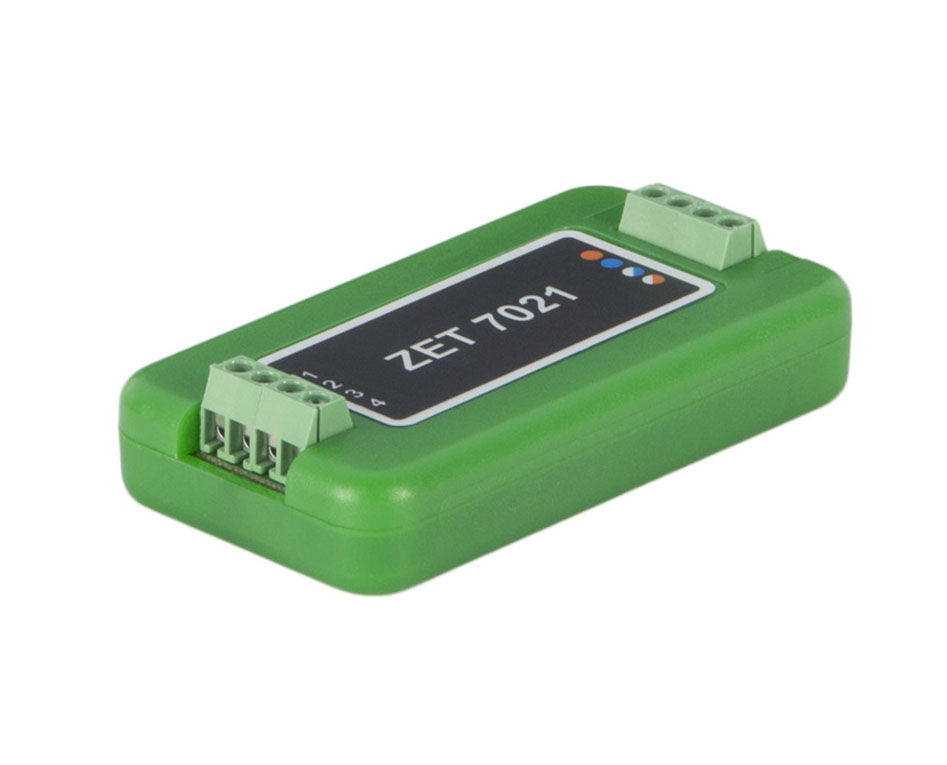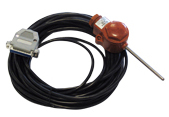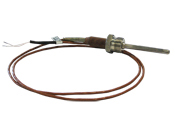Temperature measurements using resistive temperature transducers
For the purpose of temperature measurements one can use digital temperature sensors, which (together with RS-485 ZET 7021 or CAN ZET 7121 measuring modules) form resistive temperature transducers.
As a primary transducer one can use resistive temperature transducers with copper, platinum or nickel sensing elements. Below you can see nominal static characteristics of the transducers:
- 50M, 100M (copper);
- Pt100, Pt500 (platinum);
- Ni100 (nickel).
The number in the NSC index stands for sensor’s nominal electric resistance (R0, Ohm) at 0°С.
 Measuring module ZET 7021 |
 Resistive temperature detector 1288/4 Pt100 |
 Resistive temperature detector 1288/2 100M |
For copper and platinum temperature transducers there is such a notion as “nominal value of resistances ratio” (W100 = R100/R0) — the ratio of sensor’s resistance at 100°С to that at 0°С.
Temperature measurements using ZET 7021 and CAN ZET 7121 measuring modules is performed in accordance with the applicable standards and requires the use of copper resistive temperature transducers with nominal values W100, equal to 1.4260 and 1.4280.
Based on the intelligent sensors there can be established distributed measuring networks:

Structural scheme: distributed temperature measuring network (components: resistive temperature detectors and ZET 7021 modules)
It is possible to connect up to 1000 intelligent temperature sensors to a single PC.
To display the controlled temperature values one can use a digital indicator or ZETLAB Software. Metering and adjustment units (for instance, ZET 7160) are used within the scope of control systems.
Digital temperature sensors can be used for climatic chambers certification. In this case the resistive temperature transducers are placed in the corners and at the centroid of the chamber volume. For the purpose of resistive temperature detectors readings control one can use “Muclti-channel recorder” program, which depicts temperature values dynamics at each control point.
During climatic testing procedure the digital system performs the fuctions of metering and adjusting unit. The control module allows to adjust heating/ cooling speed of the chamber, temperature set-point value maintenance, alarm activation as well as to obtain tests report.
Use of digital sensors for temperature measurements is cost-efficient if compared to the use of other metering and adjusting units currently avaiable at the market.
